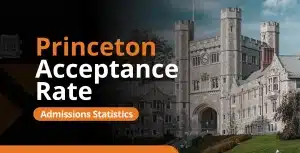Why You Should Consider The Garcia Summer Program
Have you ever wanted to explore the world of research before starting college? If so, the Garcia Summer Program could be perfect for you. This program is designed for high school students passionate about exploration and innovation, offering a chance to turn your curiosity into real-world impact.
What is the Garcia Summer Program?
This seven-week program offers structured classes for gifted high school students and the chance to conduct independent research with guidance from the Garcia Center’s faculty, students, and staff. You will design and execute original research projects and can extend your involvement into the academic year through the Mentor Program.
This year-long continuation pairs you with a faculty mentor to plan your research activities. The program coordinates with local school boards to arrange transportation and class schedules, making it accessible to students from a wide area. Since its inception, nearly three hundred students have participated in this mentor program.
Students have consistently achieved national recognition for their research in competitions like LISEF, NYCSEF, NYSSEF, and ISEF. They’ve published in peer-reviewed journals, received patents, and been inducted into the National Young Inventors Hall of Fame. Many have also gained admission to their preferred universities and professional programs.
“Students work as part of focused research teams and are taught to make original contributions of interest to the scientific community. In addition to entering national competitions, the students are encouraged to publish in refereed scientific journals and to present their results at national conferences. Our goal is to convey to the students the excitement we enjoy daily in research. The program has no set time limits. Research is a lifetime learning experience, and we hope to remain a resource to our students long after “graduation.” – Garcia Summer Program Organizing Team
How does the Garcia Summer Program work?
The Garcia Summer Program at Stony Brook begins with three days of lab safety training, followed by a test to ensure everyone understands the rules. Active researchers give daily talks on the latest research topics. Students also participate in group experiments to apply what they’ve learned about materials research.
Once students have identified their interests, they team up with experienced mentors, working independently or with partners on specific research projects. The program starts with a lab safety course and test then continues with daily lectures on current research and group experiments, such as spin-casting polymer thin films and measuring their thickness with an ellipsometer.
In addition to academic activities, the program includes barbecues, softball games, a canoe trip, a fishing excursion, and a museum visit. You will support each other in the lab and bond in the dorms, forming lasting friendships and networking opportunities. You’ll celebrate successes and provide comfort during setbacks.
As the days progress, you’ll develop your specific interests with new knowledge and experience. You’ll be grouped with mentors and divided into specific research projects based on these interests. You’ll work alone or with one or two partners to begin actual research.
The Garcia program provides mentorship from high school teachers, graduate students, and expert professors. Managing such a large group requires a sizable staff to ensure proper lab procedures. By August, you will make fewer mistakes and focus on collecting data, analyzing results, and drawing conclusions through critical thinking.
On the final day of the program, you will participate in a student research symposium. Each student presents their project in a PowerPoint slide summarizing their experiment and results to an audience of students, parents, science teachers, high school principals, and Stony Brook faculty.
You’ll showcase your learning and growth with topics like:
- Electrode Catalyst Efficiency
- Power Conversion Efficiency
- Nanoscale Morphology of Photovoltaic Cells
- Characterization of Injectable Enzymatically Cross-Linked Gelatin-Based Hydrogels
A yearbook is distributed, featuring photos of all participants, informal group pictures from trips, and abstracts of each project. Mentorship continues even after the program. When you return home, you’ll write a 20-page research paper for competitions like the Siemens Competition and the Regeneron Science Talent Search, with guidance from Garcia staff and mentors.
Each year, about 17-25 Garcia students become Siemens Semifinalists, Regional Finalists, or National Finalists, with some traveling to Washington, D.C. for the National Finals. Garcia participants also win top awards in the Regeneron Science Talent Search, Intel International Science and Engineering Fair, Junior Science and Humanities Symposium, and other competitions.
Several students have even obtained patents for their work. Some write and submit papers to professional journals and present their projects at conferences like the American Physical Society and the Materials Research Society Fall Symposium.
The Program Summary
- Begins with three days of lab safety training and a test.
- Daily talks by active researchers on the latest topics.
- Group experiments to apply materials research knowledge.
- Students team up with mentors for independent or partnered research projects.
- Includes social activities like barbecues, sports, trips, and bonding in dorms.
- Focus shifts to real research with fewer mistakes by August.
- Ends with a student research symposium where projects are presented.
- Continuous mentorship and support for writing competition papers after the program.
Who is eligible to participate in the Garcia Summer Program?
To apply for the Garcia Summer Program for 2024, high school students must meet the following requirements:
- Be at least 16 years old on or before July 4, 2024, with no exceptions.
- Have an unweighted GPA of 95/100 (3.8/4.0).
- Completed at least three of the following subjects (Honors or AP preferred):
- English
- Chemistry
- Mathematics or Calculus
- Physics
- Biology (optional)
- Achieved standardized test scores (SAT/ACT and/or Regents) in the 60th percentile or above.
- Show evidence of leadership, special talents or interests, and other personal qualities through extracurricular activities, volunteer work, and other non-academic pursuits.
Along with the application form, you must submit the following:
- Transcript of grades (typically sent by your school)
- Three letters of recommendation, including one from your Science Coordinator/Teacher. Use the Teacher Recommendation Letter Coversheet.
- Recommendation letters and coversheets must be included in sealed envelopes with the application.
- Non-refundable $50 registration fee, payable by check or wire transfer.
- Make checks payable to “SUNY Stony Brook” or include the wire transfer receipt in your application package. (Details for wire transfers are provided in the application form below)
The Garcia Summer Program 2024 application was closed on March 1, 2024.
What are the costs involved?
The Garcia Summer Program costs include a laboratory usage fee of $4000. Optional room and board packages are available:
- Room: $2438 ($53/night)
- Mandatory Meal Plan: $600
- Mandatory Student Health Services Fee: $61.50
How difficult is it to get into the Garcia Summer Program?
Getting into the Garcia Summer Program is quite competitive with an acceptance rate of around 10-15%. Each year, the program accepts approximately 50 students out of a large pool of applicants. Applicants need a high GPA (95/100 or 3.8/4.0) and strong performance in standardized tests (60th percentile or above).
The selection process considers academic achievements, leadership qualities, extracurricular activities, and personal qualities. The program receives many applications, and only a limited number of students are accepted, making it challenging to secure a spot. Students should ensure their application is strong in all areas to improve their chances.
To stand out in a competitive field like the Garcia Summer Program, you need to excel academically and show a strong passion for science and research. Highlight unique personal qualities such as leadership, initiative, and teamwork. Your application should showcase your achievements and demonstrate your potential to contribute to the Garcia community and the field of science.
Where is the Garcia Summer Program hosted?
The Garcia Summer Program is hosted at Stony Brook University in Stony Brook, New York. This program is part of the Garcia Center for Polymers at Engineered Interfaces within the College of Engineering and Applied Sciences. Stony Brook University, a renowned public research institution, offers an ideal environment for high school students to engage in advanced scientific research.
The Garcia Center focuses on polymer science and engineering, giving students access to state-of-the-art laboratories and resources.
Stony Brook University is known for its world-class research facilities and excellence in science and engineering education.
Frequently Asked Questions about the Garcia Summer Program
1. Is the Garcia Summer Program prestigious?
The Garcia Summer Program is prestigious, known for its extensive selection process and strict academic standards. Each year, only about 50 high school students are accepted from a large pool of applicants, making it highly competitive.
Participants work closely with experienced mentors on advanced research projects, often achieving significant recognition. Many students become Siemens Semifinalists, Regional Finalists, or National Finalists and win top awards in competitions like the Regeneron Science Talent Search and the Intel International Science and Engineering Fair. Students also frequently publish their research in peer-reviewed journals and present at national conferences such as the American Physical Society and the Materials Research Society Fall Symposium.
The program’s emphasis on hands-on research and mentorship from experts in the field, along with the success of its alumni, contributes to its esteemed reputation.
2. What is the acceptance rate of the Garcia Summer Program?
The Garcia Summer Program is highly competitive, with an acceptance rate of about 10-15%. Each year, only around 50 students are selected from a large pool of candidates. This low acceptance rate reflects the program’s rigorous selection criteria and its prestige in the field of scientific research for high school students.
3. Where has the Garcia Summer Program alumni gone after?
Alumni of the Garcia Summer Program have achieved success in both academic and professional fields. Many have been accepted into prestigious universities like MIT, Harvard, Stanford, and other Ivy League schools, where they continue their studies in various scientific and engineering disciplines.
In addition to academic achievements, some alumni have pursued successful careers in research, technology, and engineering. They have contributed to advancements in their fields, published research in peer-reviewed journals, and presented their findings at national and international conferences.
Garcia alumni have also been recognized with numerous awards and honors, winning major prizes in competitions like the Regeneron Science Talent Search, Intel International Science and Engineering Fair, and the Junior Science and Humanities Symposium. Some have even obtained patents for their innovative work and been inducted into the National Young Inventors Hall of Fame.
The network and mentorship provided by the Garcia Summer Program support alumni long after the program ends, helping them achieve their career goals and make contributions to the scientific community.
4. What topics were covered in the Garcia Summer Program in previous years?
In previous years, the Garcia Summer Program has covered various advanced topics in materials science and engineering. Some specific research areas chosen by students include:
- Nanotechnology and Nanomaterials: Investigating the properties and applications of materials at the nanoscale, including nanoparticle synthesis and characterization.
- Polymer Science: Studying the properties, processing, and applications of polymers, such as biodegradable plastics and polymer composites.
- 3D Printing: Exploring additive manufacturing techniques to create complex structures from various materials.
- Photovoltaic Cells: Examining the efficiency and nanoscale morphology of materials used in solar cells to improve energy conversion rates.
- Biomedical Engineering: Developing and characterizing new biomaterials, such as injectable enzymatically cross-linked gelatin-based hydrogels for medical applications.
- Catalyst Efficiency: Researching the efficiency of electrode catalysts in different chemical reactions, particularly in energy-related applications like fuel cells.
- Material Characterization: Using advanced techniques like ellipsometry and scanning electron microscopy to measure and analyze the properties of thin films and other materials.
These topics highlight the program’s focus on providing hands-on experience in high-impact areas of materials research.
What are included in the Garcia Summer Program yearbook?
The Garcia Summer Program yearbook captures various aspects of the students’ experiences and achievements. Key elements typically included are:
- Participant Photos: Individual photos of all students, often alongside their mentors and staff.
- Group Pictures: Informal group photos from social activities like barbecues, trips, and other events organized during the program.
- Project Abstracts: Summaries of each student’s research project, outlining their objectives, methods, and key findings. These abstracts highlight the diverse range of topics studied.
- Program Highlights: A recap of various activities and milestones, including lab safety training, daily lectures, group experiments, and the final research symposium.
- Awards and Recognitions: Information about awards or recognitions received by participants, such as being named Siemens Semifinalists or winners in other prestigious competitions.
- Student Reflections: Personal reflections from students about their experiences, what they learned, and how the program has influenced their academic and career aspirations.
- Mentor Contributions: Acknowledgments of the contributions made by mentors, including high school teachers, graduate students, and faculty members who guided the students’ research projects.
- Networking and Bonding: Descriptions of how students bonded and supported each other, forming lasting friendships and professional connections.
These elements provide a comprehensive overview of the students’ journey and accomplishments during the Garcia Summer Program, celebrating their hard work and dedication.
Is the Garcia Summer Program worth it?
The Garcia Summer Program is highly regarded and offers numerous benefits, making it a valuable experience for many students. Here are some reasons why the program is worth considering, along with factors to keep in mind:
Benefits
Research Experience: You’ll gain hands-on experience in advanced research, working on real-world projects in materials science and engineering. This is an advantage for your future academic and career pursuits.
Mentorship: You’ll receive guidance from experienced mentors, including university faculty, graduate students, and researchers. This mentorship helps you develop your research skills and provides insights into the scientific community.
Academic and Career Advancement: Alumni of the program often get accepted into prestigious universities and achieve significant recognition in scientific competitions. This can greatly enhance your college applications and open doors to future opportunities.
Networking Opportunities: The program fosters a strong sense of community, allowing you to form lasting friendships and professional connections with peers who share similar interests. These relationships are beneficial throughout your academic and professional career.
Recognition and Awards: Many participants have won major awards in competitions such as the Regeneron Science Talent Search and the Intel International Science and Engineering Fair. Some have even obtained patents for their research.
Publication Opportunities: You often have the chance to publish your research in peer-reviewed journals and present your findings at national conferences, further enhancing your academic profile.
Considerations
Competitiveness: The program is highly competitive, with an acceptance rate of around 10-15%. You need a strong academic record, excellent standardized test scores, and demonstrated leadership and extracurricular involvement.
Cost: The program involves significant costs, including a $3,700 lab usage fee and additional expenses for room and board if needed. The total cost can exceed $7,000 for students who require accommodation and meal plans.
Time Commitment: The program is intensive and requires a significant time commitment. You must be prepared to dedicate yourself fully to your research projects and related activities for the duration of the program.
Location: The program is held at Stony Brook University in New York, which may require travel and living arrangements for those who do not reside nearby. This can add to the overall cost and logistical considerations.
Overall, the Garcia Summer Program offers a prestigious and unique experience for high school students interested in scientific research. The benefits of hands-on research, mentorship, academic advancement, and networking opportunities make it a worthwhile investment for those who are accepted. However, you should carefully consider the competitiveness, cost, time commitment, and location before applying.
Remember, science thrives through curiosity, determination, and the bravery to explore the unknown. The Garcia Research Scholar Program or simply known as the Garcia Summer Program offers more than just academic learning; it’s an adventure into the essence of scientific discovery. Embrace this chance to learn, grow, and make meaningful contributions to the scientific community.










































